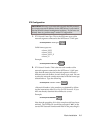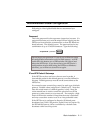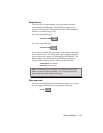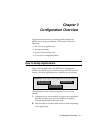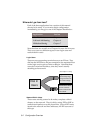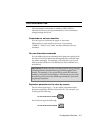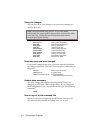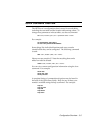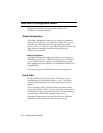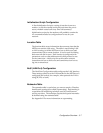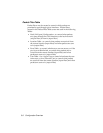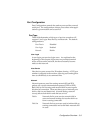
Configuration Overview 3-3
The Command Line
The Command Line Interface is similar to DOS, UNIX or
Netware in that you can type commands to view information,
change settings and so on.
Commands are not case sensitive
You can type any command in upper or lowercase.
Table entries are case sensitive, however. For example,
“SASHA,” “Sasha” and “sasha” are three different users (or
locations).
You can abbreviate commands
You can abbreviate most commands and command options with
the first two or three letters that distinguish that command from
any other command. For example, you need only type set net0
addr to set the NETServer’s IP address (the full command is set
net0 address).
IMPORTANT: Make sure that your abbreviation is long enough
to distinguish the command from any similarly spelled com-
mands. For example, if you typed IPX to set the IPX network
number, you’ll get an error message. This is because you could
be referring to any one of the following commands: ipxnetwork,
ipxgateway, or ipxframe.
Separate a parameter and its value by a space
Do not use an equal sign ( = ) or any other punctuation mark
between a parameter and the value to be set. For example, you
should type the following:
set user fredb service netdata
Enter
You should not type the following:
set user fredb service=netdata
Enter



